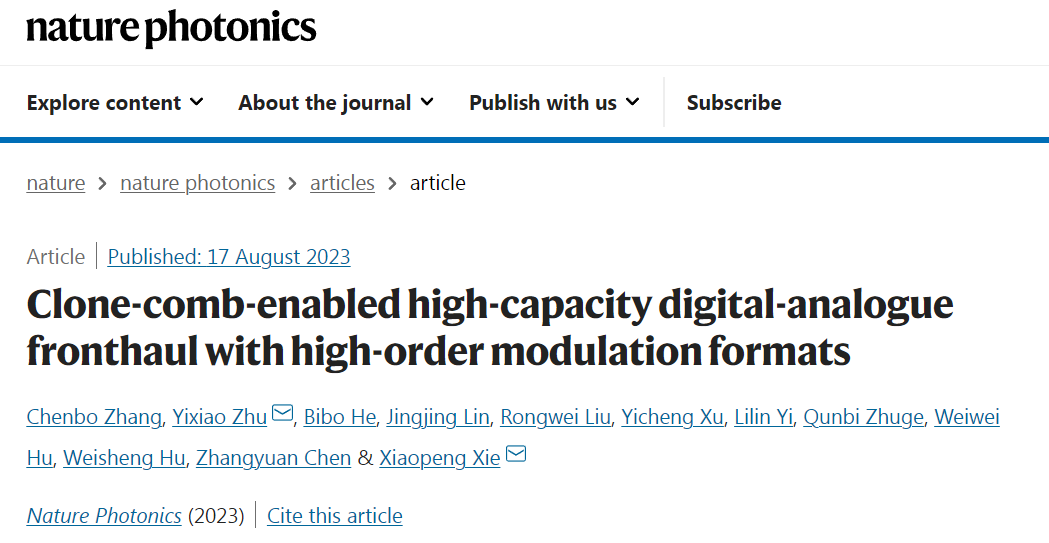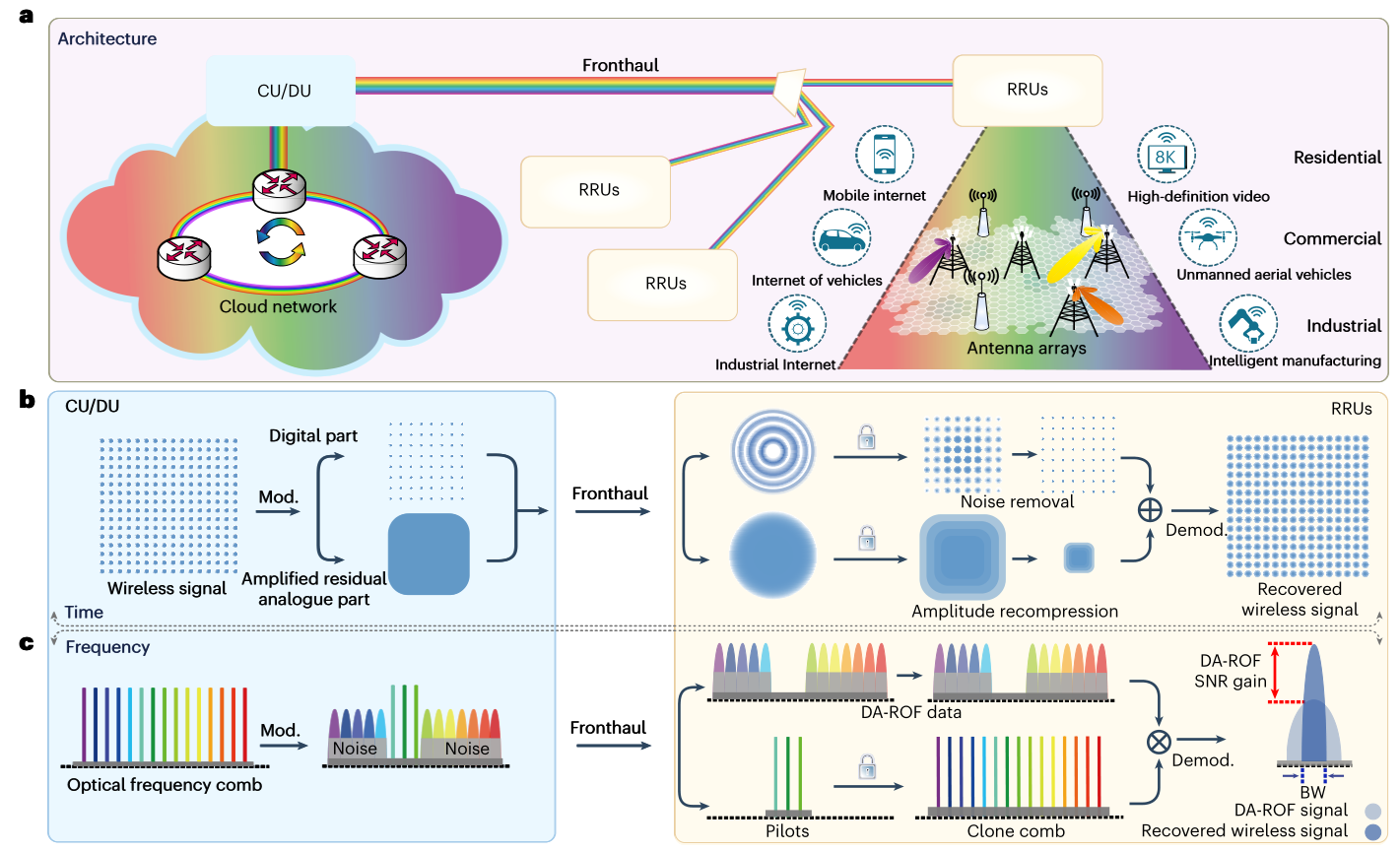- Home
- About Us
- Students
- Academics
-
Faculty
- Electrical Engineering
- Automation
- Computer Science & Engineering
- Electronic Engineering
- Instrument Science and Engineering
- Micro-Nano Electronics
- School of Software
- Academy of Information Technology and Electrical Engineering
- School of Cyber Security
- Electrical and Electronic Experimental Teaching Center
- Center for Advanced Electronic Materials and Devices
- Cooperative Medianet Innovation Center
- Alumni
-
Positions
-
Forum
News
- · Bin Dai's Team Unveils the Assembly Mechanism of β-Lactoglobulin Fibrils, Providing New Insights for the Development of Functional Nanomaterials
- · Mingyi Chen’s research group has made important progress in the field of analog-to-digital converter chips for brain-computer interface
- · Progress in the Development of Semiconductor Nanomaterials to Activate Pyroptosis for Cancer Therapy
- · Jiamiao Yang’s team achieved the high precision optoelectronic reservoir computing based on complex-value encoding
- · Significant Advancements in Resonator-Enhanced Quantum Sensing Achieved by Zenguihua's Team at the School of Sensing Science and Engineering
The Optical Network team of Shanghai Jiao Tong University and the Microwave Photonics team of Peking University have made important progress in cooperation in the field of optical-wireless convergence
Recently, the Future Ready Optical Network technology (FRONT) team led by Professor Weisheng Hu of Shanghai Jiao Tong University worked closely with the Microwave Photonics team of Peking University to deal with the challenges of limited capacity and signal-to-noise ratio (SNR) of the cloud radio access network (C-RAN) in post-5G era. The joint research team from the State Key Laboratory of Advanced Optical Communication Systems and Networks creatively proposed a hybrid digital-analog fronthaul architecture based on cloned optical frequency combs, which can simultaneously support the transmission of high-capacity and high-order format wireless signals. On August 17th, 2023, the relevant research results entitled "Clone-comb-enabled high-capacity digital-analogue fronthaul with high-order modulation" formats, was published online in Nature Photonics.

Fig. 1. Article screenshot
Background
At present, billions of mobile end users around the world rely on high-speed information transmission through wireless communication and optical fiber communication. The convergence architecture of optical fiber and wireless communication has become a challenging direction. As the ‘last mile’ of optical fiber and wireless access network, the fronthaul directly connects the mobile end user and has a crucial impact on the capacity and fidelity of the wireless signal. With the globalization and intergenerational evolution of wireless services, the bandwidth and signal-to-noise ratio of fronthaul need to be further improved. As an emerging technology, hybrid digital-analogue radio-over-fiber architecture can achieve exponential improvement of the signal-to-noise ratio at the expense of linearly increased bandwidth, which combines the advantages of both digital and analog fronthaul solutions. The disadvantages of low spectral efficiency in traditional digital interfaces and insufficient signal-to-noise ratio of analog interfaces are successfully overcome. In parallel, high-speed coherent detection has become the mainstream technology of optical fiber communication. However, due to the bottleneck of carrier phase estimation, the application of coherent detection to digital-analogue radio-over-fiber interface suffers from enormous challenges in both technical and cost aspects.

Fig. 2. Digital-analogue radio-over-fiber fronthaul architecture based on cloned optical frequency combs
Results
In order to solve the bottleneck of coherent detection application, and achieve an order of magnitude improvement in bandwidth and signal-to-noise ratio simultaneously, the joint research teams fully leveraged their research foundation accumulated for many years in radio-over-fiber and optical frequency comb technologies. They proposed the idea of applying the cloned optical comb to the digital-analogue radio-over-fiber fronthaul. Specifically, by cloning an optical comb that is identical to the original optical comb at the remote end, the carrier phase estimation can be directly omitted. Self-homodyne coherent detection of massive parallel channels can be supported simultaneously. Based on the scheme, a digital-analogue radio-over-fiber link with 12 wavelength-division-multiplexing channels is successfully demonstrated. 1024-QAM signal transmission is achieved with 240 GHz aggregated wireless bandwidth. The experimental results show that the common public radio interface (CPRI)-equivalent rate of 1.17 Tb/s in a single wavelength channel exceeds the capacity requirement of 6G fronthaul. At the same time, the joint research team also experimentally demonstrated the transmission of ultra-higher-order modulation formats up to 65536-QAM, which improves the signal-to-noise ratio by more than 600 times compared to typical analog radio-over-fiber interfaces. Through theoretical analysis and experimental validation of the scalability of the cloned optical frequency comb, the joint research team achieved a record 32.8 Tb/s CPRI-equivalent capacity, which can support 5,600 5G new radio (NR) users at the same time. Compared with other technologies that have been publicly reported in the field of optical-wireless access networks, the joint research team has achieved an order-of-magnitude improvement in bandwidth and signal-to-noise ratio, ranking in the leading position among the global research groups. This breakthrough is of great significance and can potentially promote the development of the next generation of radio access networks.

Fig. 3. Experimental results of 65536-QAM format transmission; The comparison in terms of bandwidth and SNR. (The obtained results are marked in red and purple symbols)
Paper information
The co-first authors of the paper are Chenbo Zhang (PhD candidate at the School of Electronics, Peking University) and Yixiao Zhu (associate professor at the Department of Electronic Engineering, Shanghai Jiao Tong University). Co-corresponding authors are Xiaopeng Xie (assistant professor at the School of Electronics, Peking University) and Yixiao Zhu (associate professor at Shanghai Jiao Tong University). Professor Weisheng Hu, Professor Lilin Yi, Associate Professor Qunbi Zhuge, and PhD candidate Yicheng Xu (Future Ready Optical Network Technology team of Shanghai Jiao Tong University), Professor Zhangyuan Chen, Professor Weiwei Hu, PhD candidates Bibo He, Jingjing Lin, and Rongwei Liu (Microwave Photonics team of Peking University) all participated in the research work and the writing of the paper. This work is an important result of the cooperation between Shanghai Experimental Area (supported by Shanghai Jiao Tong University) and Beijing Experimental Area (supported by Peking University) of the State Key Laboratory of Advanced Optical Communication Systems and Networks.
Link to the paper
https://www.nature.com/articles/s41566-023-01273-2
Journal Information
Nature Photonics is a peer-reviewed top journal dedicated to publishing high-quality research across all areas of photonics, including the generation, manipulation and detection of light, with a 2022 impact factor of 35.0.
-
Students
-
Faculty/Staff
-
Alumni
-
Vistors
-
Quick Links
